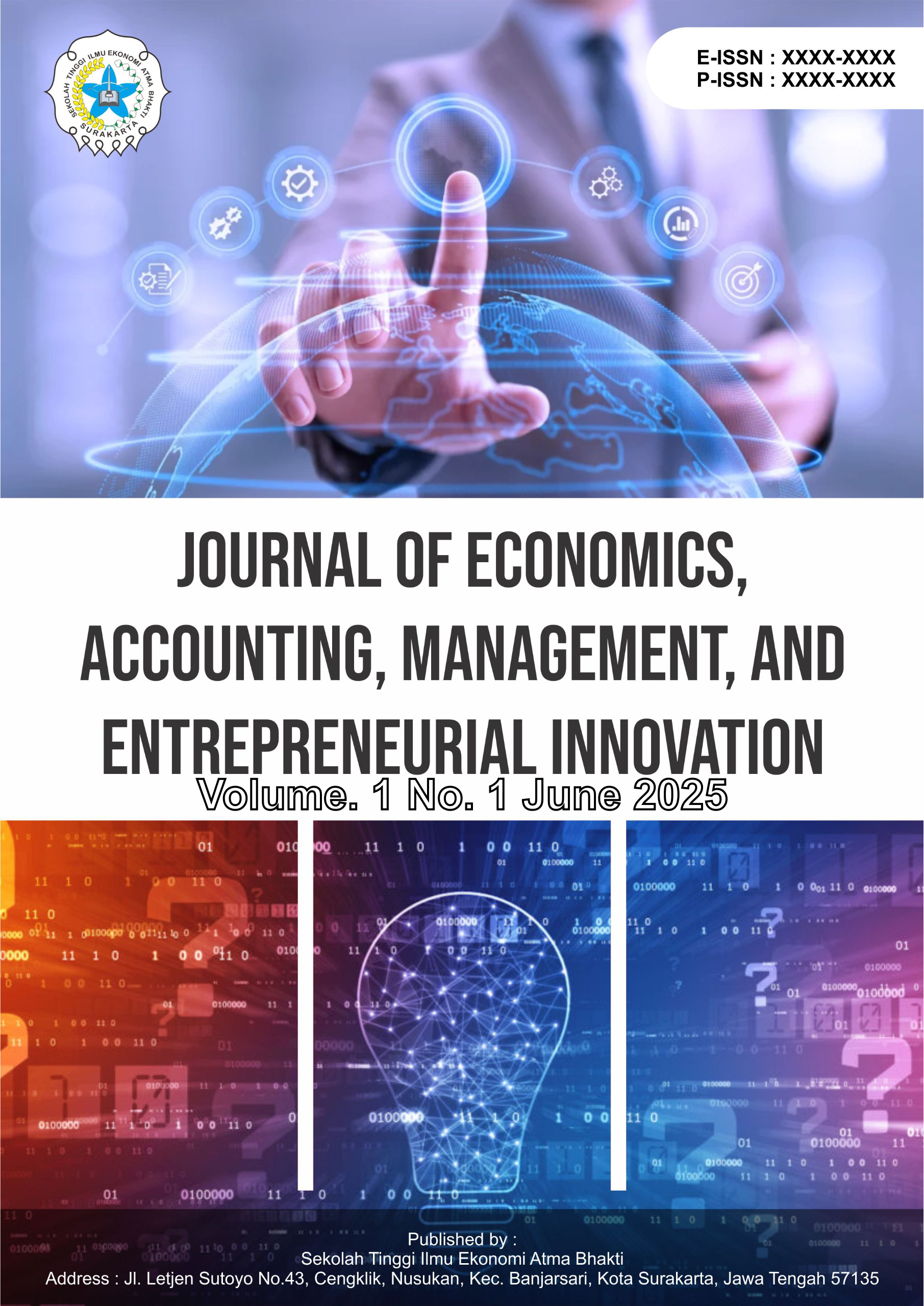Entrepreneurial Innovation and Digital Transformation: Drivers of Business Competitiveness in the Global Economy
Keywords:
Business Competitiveness, Digital Transformation, Entrepreneurial Innovation, Global Economy, Strategic ManagementAbstract
In the dynamic global economy, entrepreneurial innovation and digital transformation are vital drivers of competitiveness. Organizations are compelled to adopt innovative practices and digital technologies to remain agile, efficient, and responsive to evolving market demands. Entrepreneurial innovation promotes creativity, adaptability, and risk-taking, enabling firms to generate unique solutions and value propositions. Simultaneously, digital transformation—through artificial intelligence, big data analytics, cloud computing, and automation—reshapes operations, customer engagement, and decision-making. The interaction between innovation and digitalization creates synergy that enhances performance, fosters sustainable growth, and builds resilience in volatile environments. In globalization, where firms face intense competition, shifting consumer preferences, and rapid technological disruptions, this integration becomes increasingly critical. Companies that successfully merge entrepreneurial mindsets with digital strategies gain stronger competitive advantages and are better positioned for long-term adaptability. Case studies and theoretical frameworks demonstrate both opportunities and challenges in leveraging these elements. Opportunities arise in improved efficiency, personalized customer experiences, and innovative business models, while challenges include digital infrastructure gaps, cultural resistance, and cybersecurity risks. To address these, businesses must foster a culture of continuous learning, invest strategically in technology, and align leadership with transformative goals. The findings highlight that competitiveness in the digital era depends not only on technological adoption but also on entrepreneurial capacity to innovate. Organizations that prioritize both can respond effectively to change, exploit emerging opportunities, and build sustainable value. This study provides insights for business leaders, policymakers, and researchers seeking to understand how entrepreneurial innovation and digital transformation jointly shape the future of global competitiveness.
References
Autio, E., Nambisan, S., Thomas, L. D., & Wright, M. (2014). Digital affordances, spatial affordances, and the genesis of entrepreneurial ecosystems. Strategic Entrepreneurship Journal, 8(1), 1–17. https://doi.org/10.1002/sej.1158
Autio, E., Nambisan, S., Thomas, L. D., & Wright, M. (2018). Digital affordances, spatial affordances, and the genesis of entrepreneurial ecosystems. Strategic Entrepreneurship Journal, 12(1), 72–95. https://doi.org/10.1002/sej.1266
Barney, J. (1991). Firm resources and sustained competitive advantage. Journal of Management, 17(1), 99–120. https://doi.org/10.1177/014920639101700108
Bharadwaj, A., El Sawy, O. A., Pavlou, P. A., & Venkatraman, N. (2013). Digital business strategy: Toward a next generation of insights. MIS Quarterly, 37(2), 471–482. https://doi.org/10.25300/MISQ/2013/37:2.3
Byrne, B. M. (2016). Structural equation modeling with AMOS: Basic concepts, applications, and programming. Routledge. https://doi.org/10.4324/9781315757421
Covin, J. G., & Slevin, D. P. (1989). Strategic management of small firms in hostile and benign environments. Strategic Management Journal, 10(1), 75–87. https://doi.org/10.1002/smj.4250100107
Creswell, J. W., & Creswell, J. D. (2018). Research design: Qualitative, quantitative, and mixed methods approaches (5th ed.). Sage Publications.
Drucker, P. (1985). Innovation and entrepreneurship. Harper & Row.
Etikan, I., Musa, S. A., & Alkassim, R. S. (2016). Comparison of convenience sampling and purposive sampling. American Journal of Theoretical and Applied Statistics, 5(1), 1–4. https://doi.org/10.11648/j.ajtas.20160501.11
Hair, J. F., Black, W. C., Babin, B. J., & Anderson, R. E. (2019). Multivariate data analysis (8th ed.). Cengage Learning.
Hu, L. T., & Bentler, P. M. (1999). Cutoff criteria for fit indexes in covariance structure analysis: Conventional criteria versus new alternatives. Structural Equation Modeling: A Multidisciplinary Journal, 6(1), 1–55. https://doi.org/10.1080/10705519909540118
Li, L., Su, F., Zhang, W., & Mao, J. Y. (2018). Digital transformation by SME entrepreneurs: A capability perspective. Information Systems Journal, 28(6), 1129–1157. https://doi.org/10.1111/isj.12153
Nunnally, J. C., & Bernstein, I. H. (1994). Psychometric theory (3rd ed.). McGraw-Hill.
Porter, M. E. (1985). Competitive advantage: Creating and sustaining superior performance. Free Press.
Schumpeter, J. A. (1934). The theory of economic development. Harvard University Press.
Susanti, N., Nur, M., & Gunawan, A. (2023). Digital transformation and business resilience: Evidence from emerging markets. Journal of Business Research, 159, 113719. https://doi.org/10.1016/j.jbusres.2023.113719
Teece, D. J. (2018). Business models and dynamic capabilities. Long Range Planning, 51(1), 40–49. https://doi.org/10.1016/j.lrp.2017.06.007
Vial, G. (2019). Understanding digital transformation: A review and a research agenda. The Journal of Strategic Information Systems, 28(2), 118–144. https://doi.org/10.1016/j.jsis.2019.01.003




